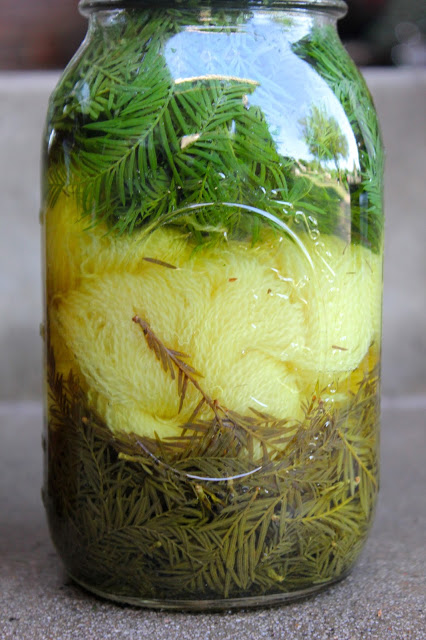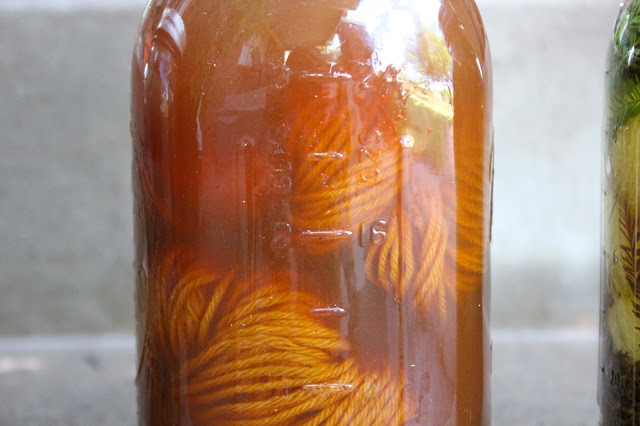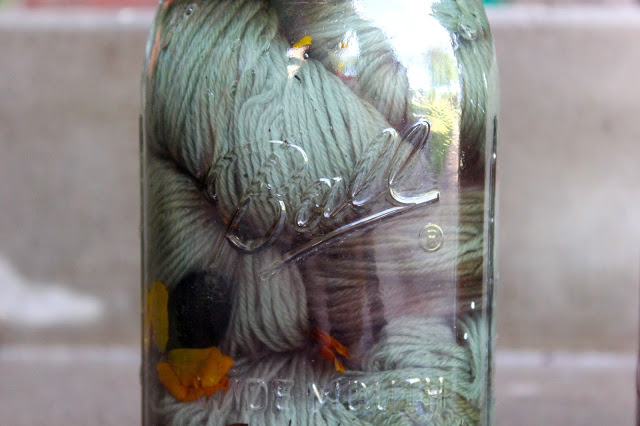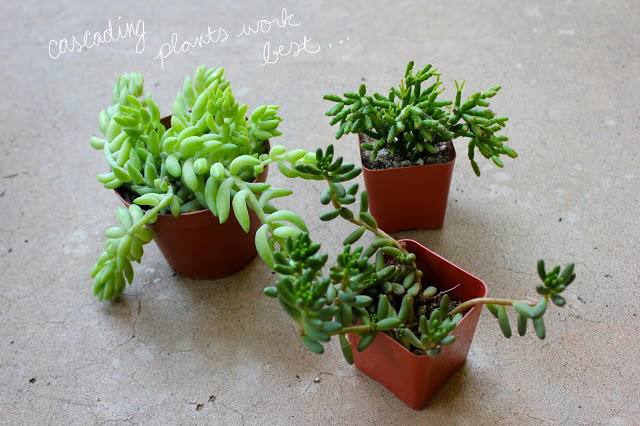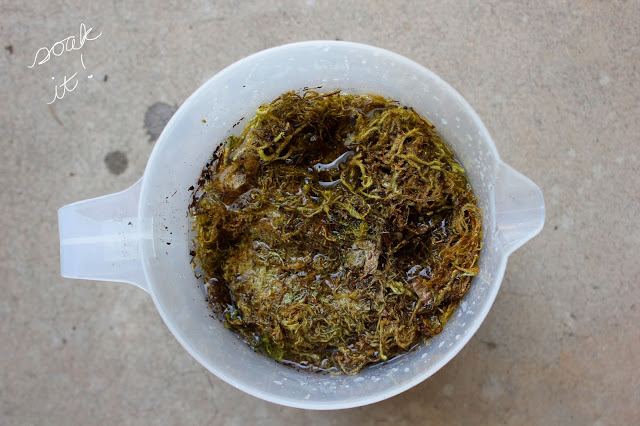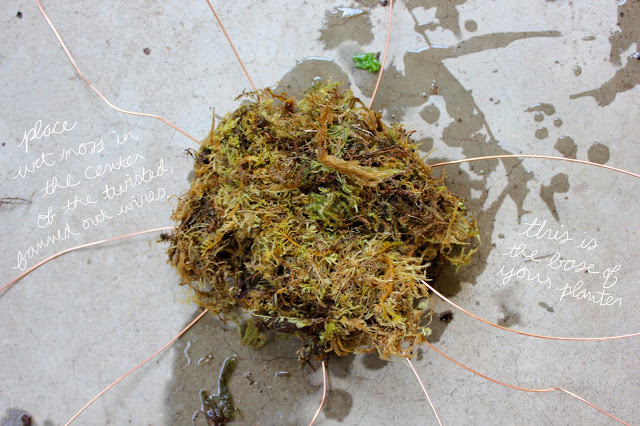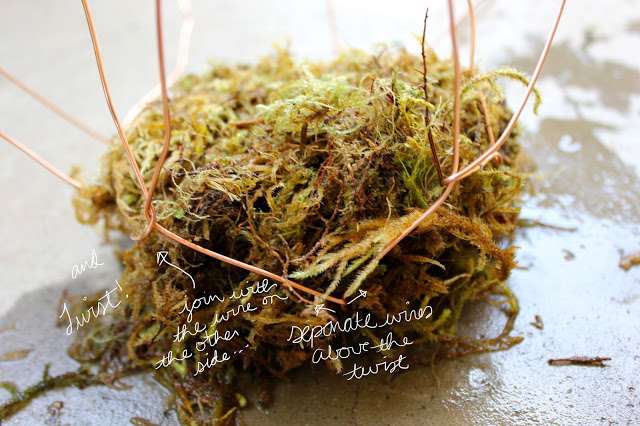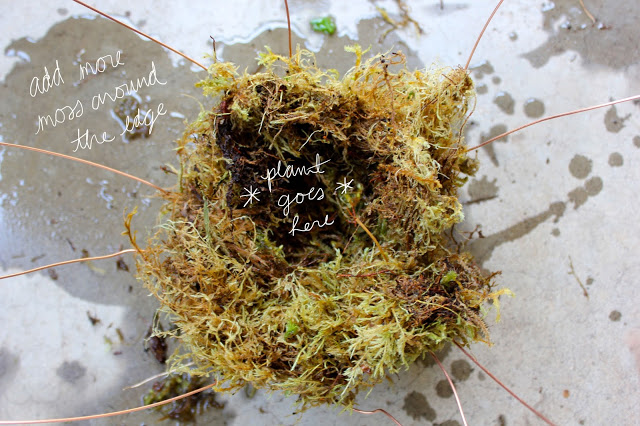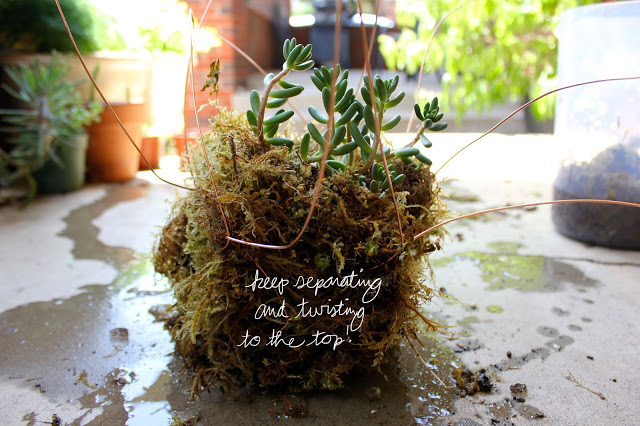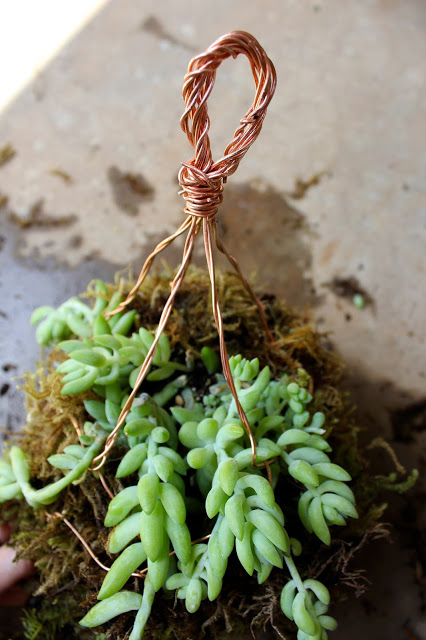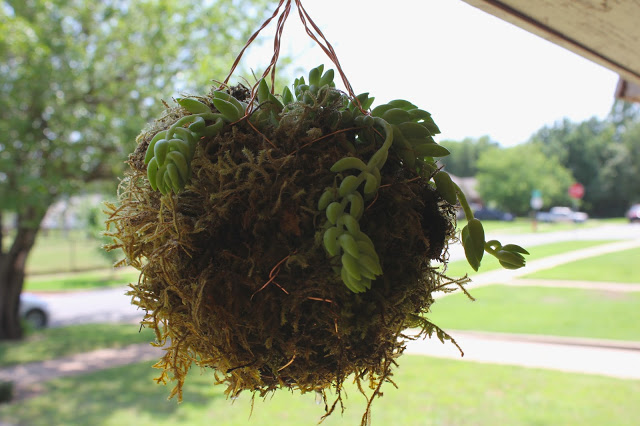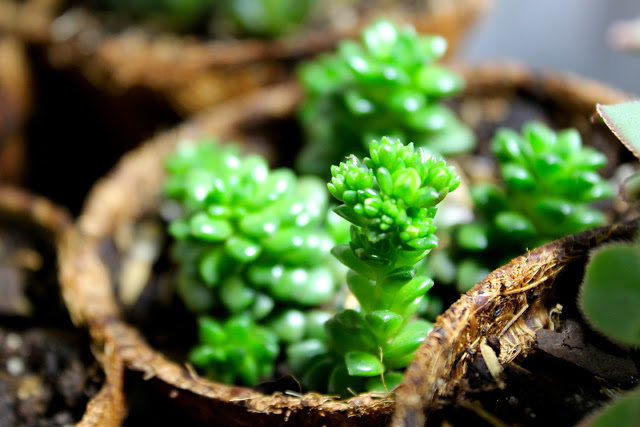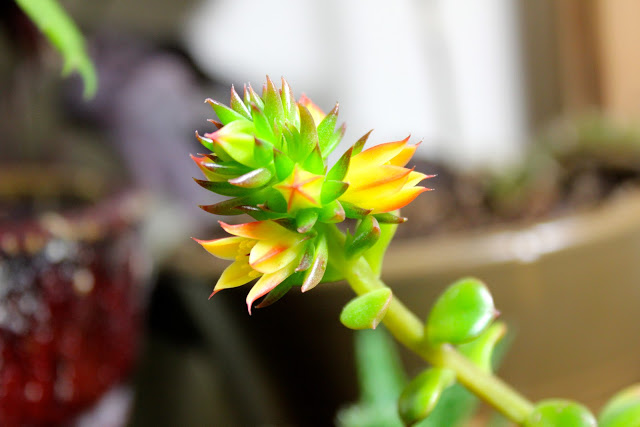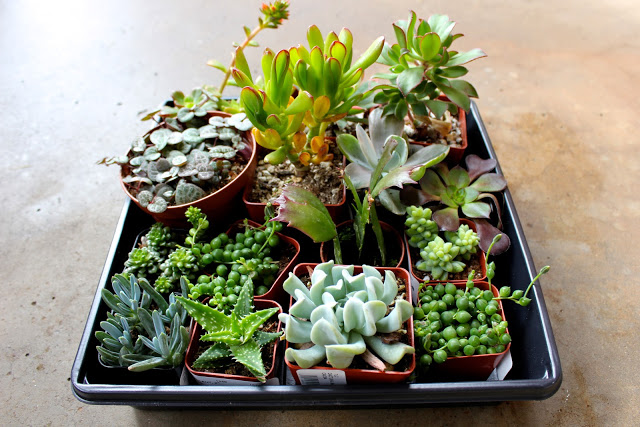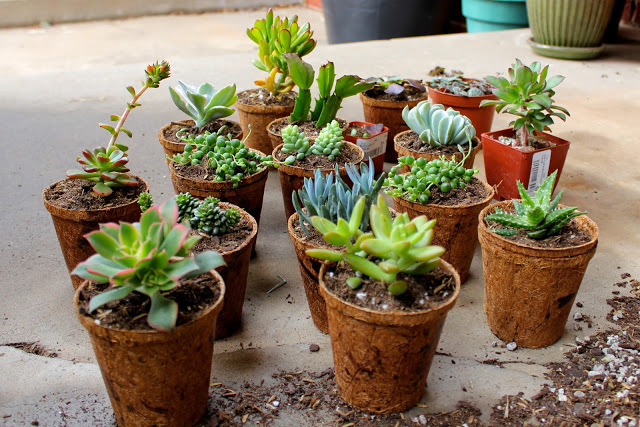I'm all about a great way to display plants, and this planter idea has been floating around in my head for a while. I'll try to keep it from making me want to buy ALL OF THE SUCCULENTS, but that's no guarantee. This project only took a couple of hours and it's perfect for cascading succulents that like to dry out a little bit in between waterings. The moss holds in moisture after you water it, however. You can either hose it down gently (this is what I've been doing when I water my other containerized porch plants) or soak it in the sink or a bucket. If you put this indoors, make sure that you hang it over the bathtub or something after watering to let it drain out completely... unless you just like having water all over the floor. Just sayin'.
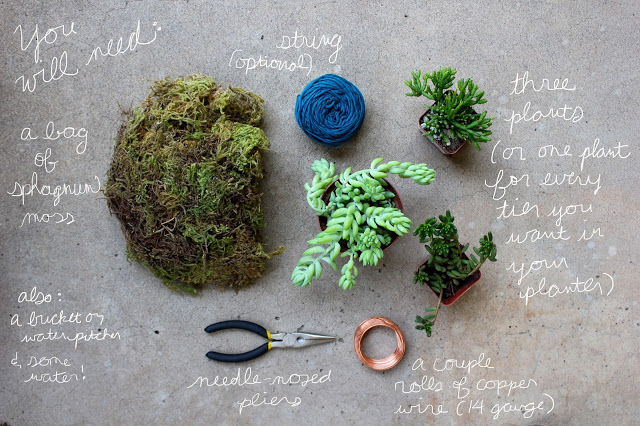
Materials needed:
A bag of sphagnum moss
Needle-nosed pliers
Approx. 50 feet of 14 gauge copper wire
Three plants (cascading types that can handle drying out will work best)
A bucket for soaking the moss, filled halfway with water
Yarn/twine is optional if you would like to tie up the moss ball while you wrap your wire.
1. Begin by cutting the copper wire into lengths of about 36 inches. You will need five pieces of wire for each tier of the planter. Meanwhile, soak the moss in a bucket.
2. Take five pieces of cut wire in a bundle and find the center of the length of wires. Using the pliers, twist the wires around each other to form the center of the bottom of your planter. Spread the wires apart in a circular/sunburst fashion. You now have ten wires around the circumference of the center twist.
3. Place a handful of wet moss in the center of the wires to form the foundation for your plant.
4. Take two adjacent wires and twist them at the edge of the bottom of the planter. They should still be spread apart from each other on the bottom to provide more support - just bend them toward each other at the corner to twist.
5. Go all around the edge of the planter twisting sets of two wires to begin the side supports of the planter.
6. Next, bend each wire in a set away from the other toward the wire on the other side. Now twist these two wires together forming five new sets of wires. Continue to repeat steps 5 and 6, adding moss around the edge as you go and leaving a pocket in the center where your plant will be inserted.
7. Place the plant in the center pocket, and add more potting soil if needed. Cover the top and sides with more moss.
8. Continue twisting the wire at the sides until you have reached the top. Gather all the wires, centered above the plant about 4 inches and join them together. Using the pliers, twist the wires into one coiled wire. For the top tier of the planter, make a loop with the coil and then twist the ends around the coil below the loop. You can then hang it from a plant hook. For the lower tiers, you can join them to the tier above by wrapping the ends of the coil around the wire twist on the bottom of the planter tier, and then securing it by wrapping the ends around the coil.
That's it! Water once you notice the moss going dry. What do you think? Anyone want to make a guess at how many of these will be hanging on my porch by the end of the summer?! :)

